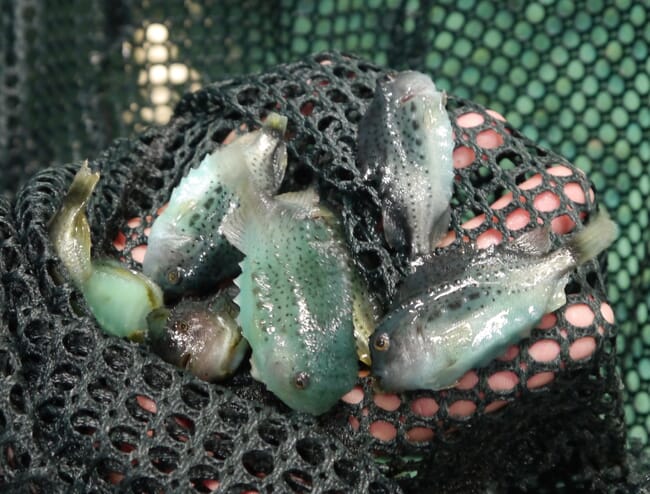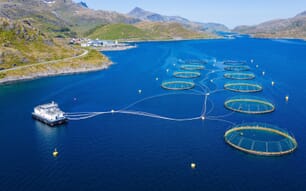As many as 60 million cleaner fish – including ballan wrasse and lumpfish – are put into farm cages to eat lice off salmon every year, but there is limited research into how efficiently they do this job. Now scientists from the University of Melbourne, Australia, and Norway’s Institute of Marine Research (IMR) have gone through all published studies in the field - and found large knowledge gaps.

© Tom Morton
In a new review study, researchers have systematically analysed published scientific studies that have tested the effectiveness of cleaner fish.
“The increasing use of cleaner fish, and the major challenges these species face in surviving and thriving in salmon cages means that we must question whether this is appropriate use of animals. For the industry to defend their use in sea cages, their efficiency and function must be substantiated by robust evidence. Our review shows that robust evidence is still lacking,” says IMR’s Dr Frode Oppedal.
The review shows that:
- The reported effect of cleaner fish on the number of salmon lice on salmon in the different studies varied greatly.
- Only 11 published studies had examined lice predation in experimental setups with and without cleaner fish and in general replication was low,
- Almost all studies were done in small experimental cages or tanks and only one published study was performed in large, commercial-sized cages.
“Taken together, the body of evidence is not representative of today's use of cleaner fish by the industry, where up to 200,000 salmon swim in a single cage of enormous volume and depth. Here, close contact between salmon and cleaner fish is not guaranteed, as it is in small scale tanks and cages with small volumes where promising results of the effect of cleaner fish are most often recorded,” explained Professor Tim Dempster from the University of Melbourne.
The study reveals knowledge gaps that researchers believe should be filled with further research on various topics for all species used as cleaner fish.
“First and foremost, cleaner fish must be offered an environment they can thrive and survive in. The focus should be on understanding what are the best environmental conditions and optimal densities, lice removal efficiency under different environments, and breeding of cleaner fish that are better suited for life in the cages,” says Oppedal.
“The industry is gradually gaining experience with the use of cleaner fish in commercial cages, and several farms report good results from time to time. In the future, it is important that knowledge of when cleaner fish worked well, and when they did not work well, is developed and shared, and documented in scientific studies at representative scale in commercial cages” says Dempster. “An evidence-based approach will help the industry improve most rapidly without the pitfalls of mis-steps.”
Researchers believe that there is a particular need for research on the effectiveness of several wild caught wrasse species, where many millions are used each year but there are very few studies to support their lice removal effects. Lumpfish, the species most commonly used, are also the species with the best scientifically documented effect, but here too the evidence of their effects is limited to a few locations. Research should be extended to different environments and conditions. There is also a knowledge gap for how cleaner fish work together with other preventative and control measures against lice.
Improving cleaner fish efficacy
The researchers behind the study believe that more targeted, knowledge-based use of cleaner fish should increase their lice-eating effect, and lessen economic, sustainability and ethical concerns about their use.
“Increased welfare for cleaner fish will likely make them better lice-eaters, but it is also absolutely necessary for the use of cleaner fish to be able to be defended both legally and ethically,” Oppedal points out.
The study was recently published in the scientific journal Aquaculture Environment Interactions as a collaboration between researchers at the University of Melbourne and the Institute of Marine Research.
The full study, published under the title, Sea lice removal by cleaner fish in salmon aquaculture: a review of the evidence base, in Aquaculture Environment Interactions can be downloaded, for free, here.



